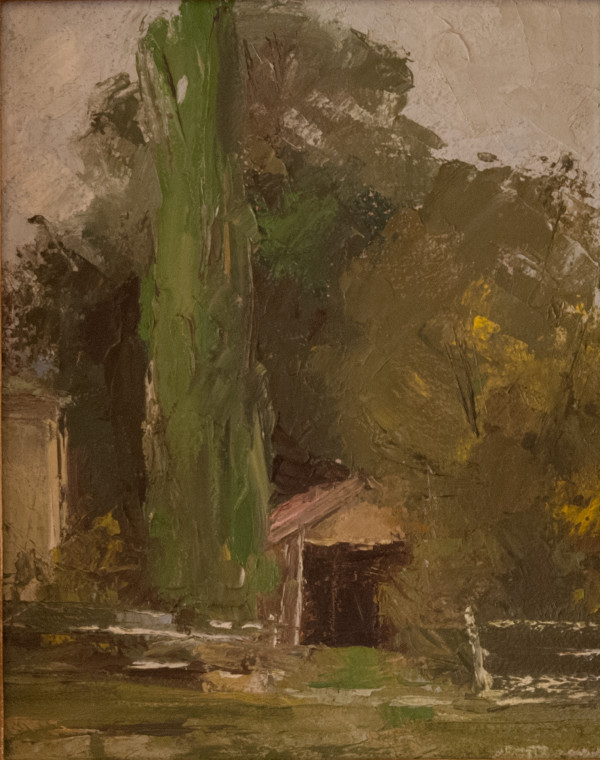-
Artist: William Langson Lathrop (American, 1859-1938)
“He was born in Warren, Illinois, and raised on a farm in Painesville, Ohio near Cleveland His father was a doctor and his mother was Irish and a lover of the arts. As a boy, he did much carving from the local clay and bought his first paint at age twelve. He sent drawings and sketches to New York City editors, and received an art department job offer from Charles Parsons, editor of Harper and Brothers publishing. Parsons subsequently advised Lathrop to go back to the landscape he loved and not corrupt his natural instincts for painting with art school training. However, he turned to etching and returned to New York where he worked for The Photoengraving Company. There he met Henry Snell, who was to become his life-long friend. New York art dealer C Klackner exhibited his landscape painting, and although Lathrop never took formal training he learned from many artists, most especially John Twachtman, J. Alden Weir, and Henry Ward Ranger.” (1 askart).
“Largely self-taught, Lathrop briefly studied at the Art Students League in New York City in 1886, under William Merritt Chase. In 1888, he traveled to England, France and Holland. He had little interest in cities and museums, but was captivated by Europe’s quaint villages and rural landscapes” (2 300 years).
“Lathrop was one of the founders of the New Hope School and worked with Tonalist and Impressionistic techniques. He worked in landscapes from 1880s to the 1910s. The backgrounds of his paintings provided a Tonalist mood and color” (3).
“In 1888, he married Annie Burt, but he failed to make much of a living for her and their two children, so J. Alden Weir helped support them by letting them live on his property. Then Lathrop moved his family back to Painesville where he tried unsuccessfully for five years to farm. Deciding to try one more time in New York City, he entered the annual exhibition of the American Watercolor Society and won the top honor, the Evans Prize. Suddenly there was a market for his work, and because of a friend from Painesville who had settled in New Hope, Lathrop and his family from 1899 lived there at Phillips Mill on the Delaware River about forty miles north of Philadelphia. For thirty years, he had a successful career, and his home became the center of the growing art colony, which attracted many luminaries including Henry Snell and Daniel Garber. Lathrop was the unofficial father figure, and his wife the leader of the social life. Lathrop taught privately at Phillips Mills, previously having taught in the Poconos and at the Lyme, Connecticut Summer school in 1907” (1).
“In 1929, he founded the Philips il Community Association, and severed as its first president. The Mill hosted annual exhibitions organized by Lathrop, Edward Willis Redfield and others” (2).
“In 1938, Lathrop perished in a hurricane off Montauk, Long Island where he had anchored his boat to escape the storm” (1).
Reference:
1.
Askart staff. William Lathrop [internet]. [cited 2015 Nov 15]. Available from: http://www.askart.com/artist_bio/William_Langson_Lathrop/23148/William_Langson_Lathrop.aspx
2.
Zellman, MD. 300 Years of American Art. New Jersey: The Wellfleet Press; 1987.
3.
The Caldwell Gallery Staff. William Langston Lathrop [internet]. [cited 2015 Nov 15]. Available from: http://www.caldwellgallery.com/bios/lathropbio.html
